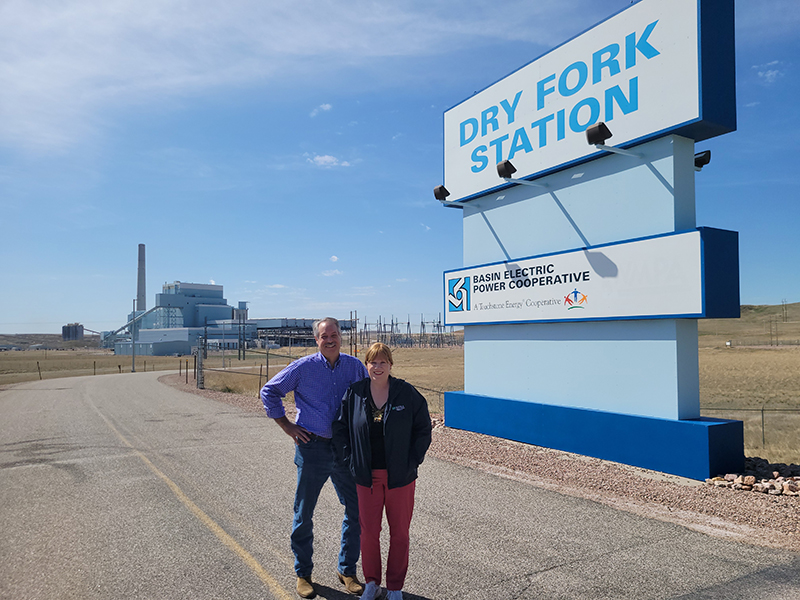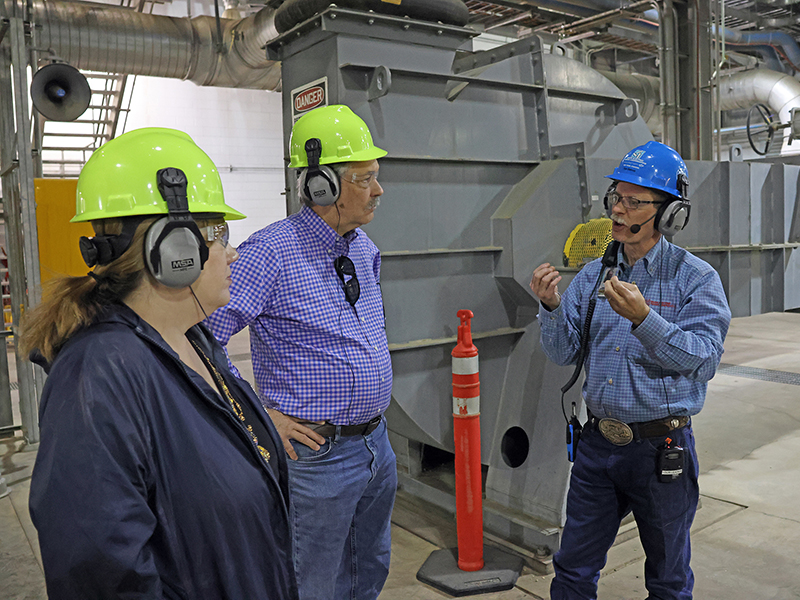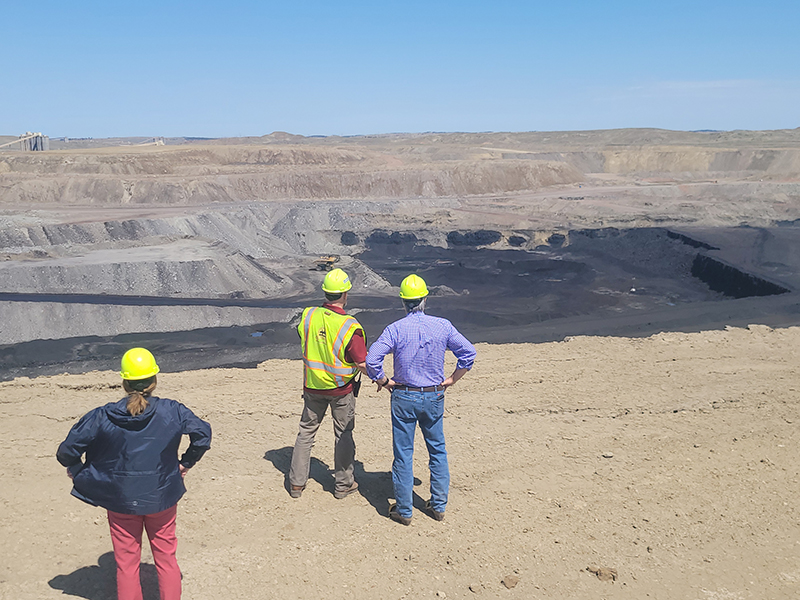- Products
- About
- Responsibility
- Environment
- News
- Contact us
- Careers
-

Two employees from National Rural Electric Cooperative Association (NRECA) recently visited Basin Electric Class C member Powder River Energy Corporation (PRECorp). PRECorp took the NRECA representatives on tours to show them how Basin Electric facilities differ from other energy suppliers.
The tour began at Dry Fork Station near Gillette, Wyoming. Tom Stalcup, Dry Fork Station plant manager, showed the visitors an overview of the plant design, the Wyoming Integrated Test Center (ITC), and the Wyoming CarbonSAFE project. Stalcup says they focused on the environmental controls installed on the plant.
“I think it’s valuable to show visitors that we are a state-of-the-art facility. We are reliable, but we are also environmentally friendly,” says Stalcup.

The tour continued at the Dry Fork Mine near Gillette, Wyoming, where Dave Green, Dry Fork Mine project engineer, discussed the processing of coal starting with the truck dump, crusher, conveyor system, and silos. He explained how the mine blends two coal seams and different areas of the pit to meet customer coal quality needs, and how the coal is shipped via train loadout and conveyor system.
“On the way to observe the pit and mining operations, we drove through reclaimed land, and I briefly explained the entire mining process,” says Green. “I shared information about baseline studies, state environmental permitting, pit opening, the basics of surface mining, constructing post-mine topography, and topsoil/seeding efforts.”
Green says the visitors were fascinated by the “rabbitats”, which are created when large sandstone boulders get moved to the sides of the mining pit until post-mine topography has been completed, and then are pushed into piles scattered across the reclamation area.
“Topsoil is spread around the piles, and they eventually become micro-ecosystems,” says Green. “The rockpile attracts small animals because of the shelter they provide, which in turn attracts predators. They are effective across the reclamation in the Powder River Basin to help re-establish various wildlife species.”
Green says the guests asked about the operation, the number of employees, how water generated from the pit is handled, and safety/environmental questions.
“Mining tours are an extremely valuable tool to educate people about the realities of American mining in the 21st century,” says Green. “Dry Fork Mine has an exceptional safety and environmental record and is an excellent example of what mining can and should be. We help provide low-cost electricity to businesses and families across the region and do so safely and efficiently with painstaking attention to state and federal guidelines designed to ensure environmental compliance.”
The NRECA visitors had great things to say about Dry Fork Station and Dry Fork Mine. They commented on the cleanliness and efficiency of the energy generation and transmission process. They were fascinated to see how modern and efficient the coal extraction and transfer process is, as well as how big the loaders and trucks are.

“Unlike other coal-fired generating stations that we have visited, the Dry Fork facility clearly demonstrates just how effectively technology can be used to ensure a clean and safe work environment while also producing a high and consistent level of baseload generation,” says Peter Baxter, NRECA senior vice president and plan administrator.
Krista Britton, NRECA vice president of member benefit services, says the tours were a great demonstration of how committed the electric cooperative community is to maintaining a safe and reliable grid system and keeping consumer electric bills as low as possible.
“By investing in efficient, current technology as well as research and emerging technologies such as the on-site ITC, electric cooperatives continue to lead the industry,” says Britton. “Seeing both of these facilities in operation made us feel very proud to be a part of the electric cooperative family.”
Baxter and Britton say the tours provided them with a great appreciation for all that goes into generating electricity at a coal-based power plant.
“Having this hands-on experience helps us better understand our members needs and daily challenges, especially as it relates to the employees they need to successfully run their operations,” says Baxter. “This deeper understanding, in turn, informs the evolution of our benefit programs to ensure they continue to help co-ops recruit and retain those critical employees.”
Dakota Gasification Company
Headquarters:
1717 East Interstate Avenue | Bismarck, ND 58503-0564 USA
701.223.0441 | 1.800.242.2372
Great Plains Synfuels Plant
420 County Road 26
Beulah, ND 58523-9400 USA
701-873-2100
A subsidiary of:
Basin Electric wants all interested and qualified candidates to apply for employment opportunities. If you are an applicant with a disability who is unable to use our online tools to search and apply for jobs, or who needs other assistance or accommodations, please contact us at 701-223-0441. Please indicate the specifics of the assistance needed or provide your contact information, and a Basin Electric Human Resources representative will contact you. Basin Electric is an Equal Employment Opportunity Employer regarding race, color, religion, sex, sexual orientation, gender identity, national origin, disability, and veterans status.